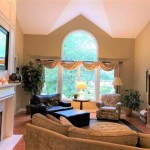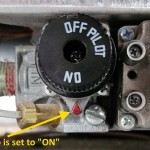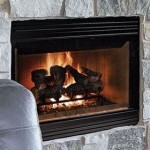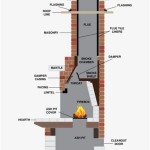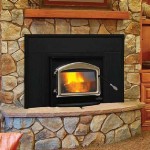The Enduring Appeal of Rough Cut Fireplace Mantels
A fireplace mantel serves as a focal point in a room, drawing the eye and contributing significantly to the overall aesthetic. While various materials and styles are available, the rough cut fireplace mantel offers a distinct character that resonates with a sense of history, natural beauty, and rugged authenticity. This article will explore the unique advantages, design considerations, installation strategies, and maintenance requirements associated with rough cut fireplace mantels.
Rough cut mantels, also frequently referred to as live edge mantels or rustic mantels, are characterized by their unfinished or minimally processed appearance. They often retain the natural edges of the wood, including the bark or cambium layer, and showcase the inherent imperfections such as knots, cracks, and grain variations. This contrasts sharply with precisely milled and uniformly finished mantels, offering a more organic and visually dynamic look.
Aesthetic and Design Benefits
The primary appeal of a rough cut mantel lies in its ability to introduce a strong element of natural beauty into a space. The wood's unique grain patterns, color variations, and textural irregularities become prominent features, creating a visual point of interest that complements a variety of design styles. Whether incorporated into a modern farmhouse, a minimalist loft, or a traditional living room, a rough cut mantel can provide a grounding element that connects the interior space to the natural world.
The inherent imperfections of the wood lend each rough cut mantel a unique character. No two pieces are exactly alike, ensuring that each installation is a one-of-a-kind creation. These variations contribute to a sense of authenticity and history, suggesting that the mantel has been carefully selected and thoughtfully incorporated into the design. This individual character sets rough cut mantels apart from mass-produced alternatives and allows homeowners to express their personal style.
Furthermore, rough cut mantels can be paired with a wide range of fireplace surrounds and finishes to create diverse and cohesive designs. The rugged texture of the wood contrasts effectively with smooth stone, brick, or tile surrounds, creating a visually appealing juxtaposition. Similarly, the natural hues of the wood can be complemented by various paint colors, stains, or sealants to achieve a desired aesthetic. The versatility of rough cut mantels makes them a suitable option for both renovation projects and new construction.
Material Selection and Preparation
The choice of wood species plays a crucial role in determining the appearance, durability, and overall character of a rough cut mantel. Popular options include hardwoods such as oak, maple, walnut, and cherry, which offer exceptional strength and resistance to wear and tear. Softwoods like pine, cedar, and fir are also used, often for their lighter color and distinctive grain patterns. The selection should consider the aesthetic preferences of the homeowner, as well as the structural requirements of the installation.
Before installation, the wood must be properly dried and seasoned to minimize the risk of warping, cracking, or shrinking. Kiln-drying is a common method used to reduce the moisture content of the wood to an acceptable level. This process involves placing the wood in a controlled environment with regulated temperature and humidity. Air-drying is another option, although it typically requires a longer period of time. Regardless of the drying method, it is essential to ensure that the wood is stable and free from excessive moisture before proceeding with installation.
The preparation of the wood may also involve cleaning, sanding, and applying a protective finish. Removing any dirt, debris, or loose bark from the surface is essential to ensure a smooth and even finish. Light sanding can help to smooth out any rough edges or splinters without compromising the natural character of the wood. A sealant, stain, or varnish may be applied to enhance the appearance of the wood and protect it from moisture, scratches, and UV damage. The choice of finish will depend on the desired aesthetic and the level of protection required.
Installation Considerations and Safety
The installation of a rough cut fireplace mantel requires careful planning and attention to detail to ensure both structural integrity and compliance with safety regulations. The weight of the mantel must be adequately supported by the fireplace surround or wall structure. Appropriate mounting hardware, such as brackets, anchors, or bolts, should be selected based on the weight of the mantel and the composition of the supporting structure. Consulting with a qualified contractor or structural engineer is recommended to ensure a safe and secure installation.
The proximity of the mantel to the fireplace opening is a critical safety consideration. Building codes typically require a minimum clearance between the mantel and the firebox to prevent the wood from overheating or catching fire. This clearance distance will vary depending on the type of fireplace, the size of the opening, and the materials used in the construction of the mantel. It is essential to consult local building codes and regulations to determine the specific requirements for fireplace mantel installations.
During the installation process, it is important to take precautions to protect the surrounding surfaces from damage. Drop cloths, painter's tape, and other protective materials should be used to prevent scratches, dents, or spills. Precise measurements and accurate cuts are essential to ensure a proper fit and alignment. Using a level and a stud finder can help to ensure that the mantel is installed straight and securely anchored to the wall studs or framing.
Maintenance and Long-Term Care
Proper maintenance is essential to preserve the appearance and structural integrity of a rough cut fireplace mantel over time. Regular cleaning with a soft, dry cloth can help to remove dust, dirt, and debris from the surface. Avoid using harsh chemicals or abrasive cleaners, as these can damage the finish or the wood itself. For stubborn stains or spills, a mild soap and water solution can be used, followed by thorough drying.
Periodic inspection of the mantel is recommended to identify any signs of damage, such as cracks, splits, or insect infestations. Small cracks can often be repaired with wood filler or epoxy, while larger cracks may require professional repair. If signs of insect activity are detected, it is important to take prompt action to prevent further damage. This may involve treating the wood with an insecticide or consulting with a pest control professional.
The finish of the mantel may need to be reapplied periodically to maintain its protective properties and aesthetic appeal. The frequency of reapplication will depend on the type of finish used, the level of exposure to sunlight and moisture, and the overall wear and tear. Before reapplying the finish, the surface should be cleaned and lightly sanded to ensure proper adhesion. Follow the manufacturer's instructions carefully when applying a sealant, stain, or varnish.
In addition to routine cleaning and maintenance, it is important to take precautions to prevent damage to the mantel from excessive heat or moisture. Avoid placing flammable objects directly on the mantel, and keep the area around the fireplace well-ventilated to prevent the build-up of moisture. If the fireplace is used frequently, consider using a fireplace screen to protect the mantel from sparks and embers.
The enduring appeal of rough cut fireplace mantels lies in their ability to combine natural beauty, rugged authenticity, and individual character. By carefully selecting the right materials, preparing the wood properly, installing the mantel securely, and maintaining it diligently, homeowners can enjoy the warmth and charm of a rough cut fireplace mantel for many years to come. A rough cut mantel is an investment that adds visual interest and lasting value to this central part of a home.

Rough Sawn 6x6 Fireplace Mantel Elmwood Reclaimed Timber

Rough Sawn Fireplace Manels Made With Recycle Barn Beams

Reclaimed Wood Fireplace Mantels Mantel

Rough Sawn Fireplace Manels Made With Recycle Barn Beams

Reclaimed Antique Rough Sawn Wood Beams Elmwood Timber

12 X Custom Made To Size Fireplace Mantel With

Rough Sawn Fireplace Manels Made With Recycle Barn Beams

Rough Sawn 2x 8 Fireplace Mantel Elmwood Reclaimed Timber

Pin On S

Hand Hewn Fireplace Mantels Made With Reclaimed Wood
Related Posts

